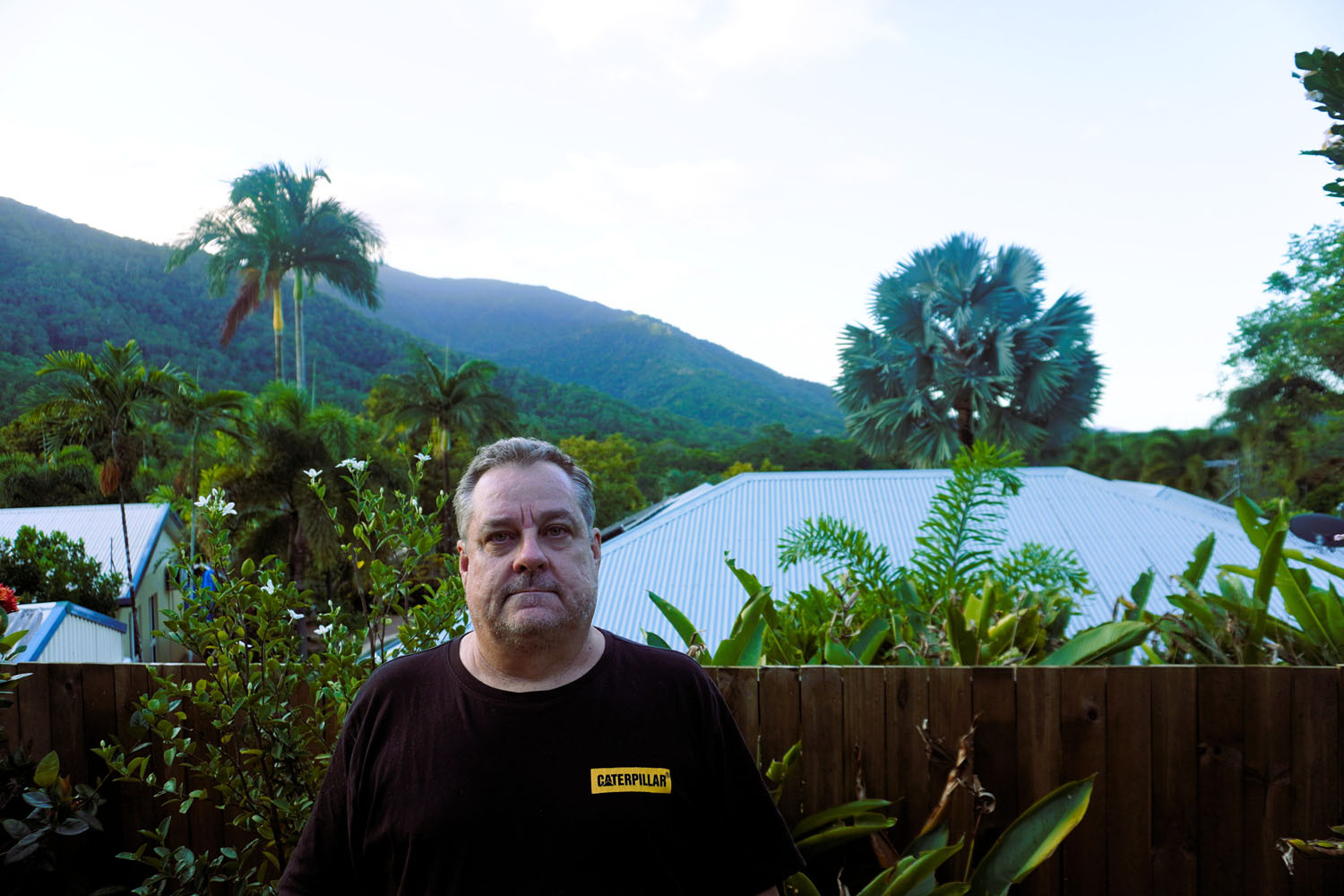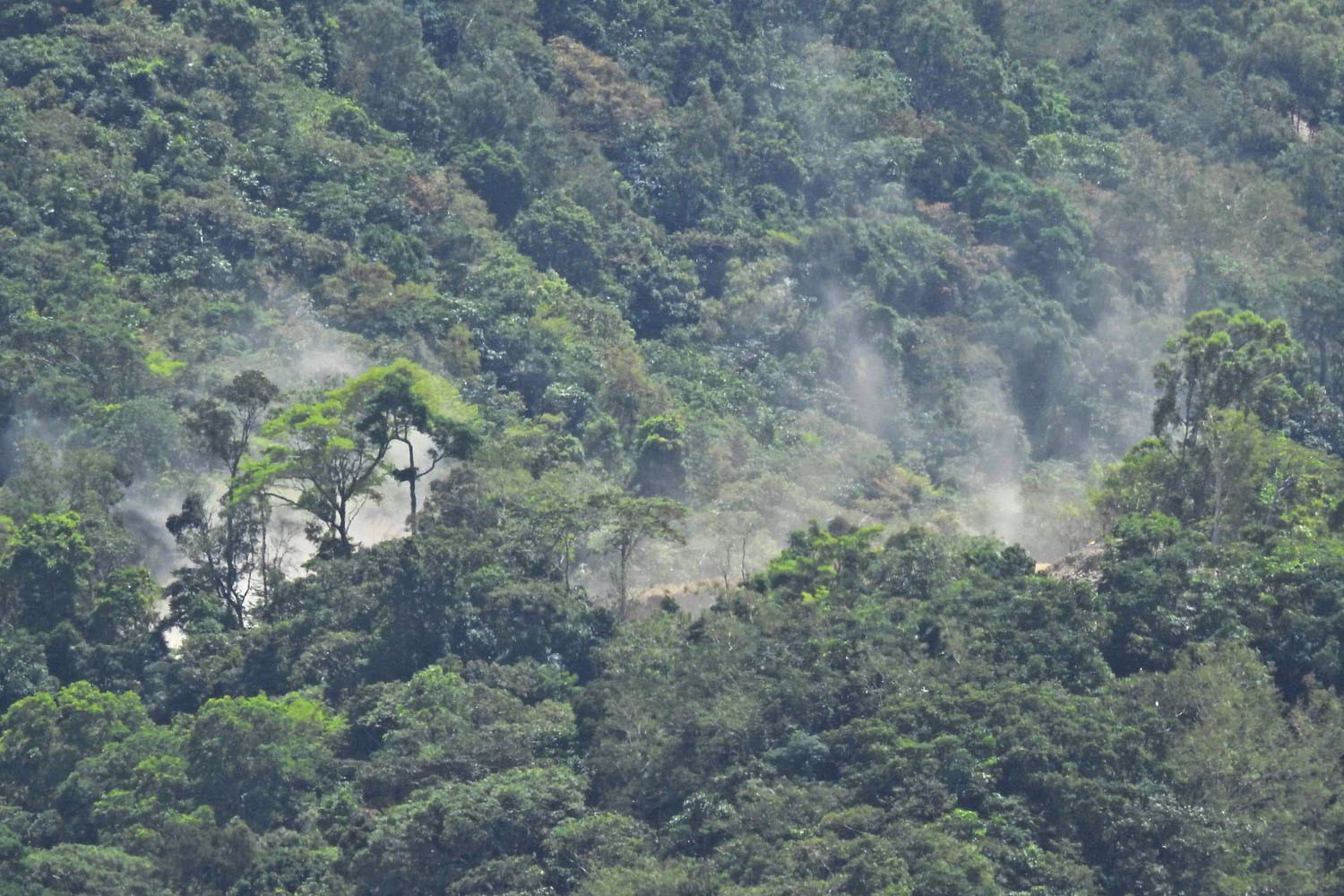General News
24 October, 2025
Hard rock blast
A HARD rock quarry in Redlynch Valley is angering residents as it now creeps above the ridgeline which long protected homes.

The quarry, operated by Boral, has been accused of alleged regulatory shortcomings, environmental harm and community consultation issues.
Redlynch Valley Action, a local community group, has been leading calls for greater transparency and oversight.
President Kim Prince told Cairns Local News that residents have long been affected by industrial noise and dust, including silica dust, as well as the threat of rolling rocks and landslides from the quarry, which sits perilously close to homes in the northern part of the valley.
“The mountain ridge used to provide a buffer, but Boral has scaled it, bringing the quarry right above residential areas,” he said.
“People who moved here for the serenity and spectacular rainforest now live literally in a blast zone.”
Mr Prince also raised concerns about the long-term management of the quarry pit itself.
“There’s a huge crater that was supposed to be filled in 1990 under original council conditions,” he said.
“That never happened. Now Boral wants to dump 1000 Olympic-sized swimming pools of fill there, destroying regrown cassowary habitat and creating massive dust impacts for residents.”
Photos provided by residents show the extent of the quarry’s footprint and the proximity of homes, illustrating the scale of the potential hazard.
Mr Prince noted that Boral briefly published “community awareness” videos portraying the quarry as largely hidden from view, but these were removed after residents challenged the narrative.
“Most homes in Redlynch are elevated. The quarry isn’t hidden unless homeowners plant trees to block it,” he said.
Residents living around the Redlynch quarry say the extension has changed the landscape dramatically.

Those living south of the quarry fear they will soon wake up to a looming rock face as excavation continues, while others to the north are already dealing with constant dust, noise and concerns about potential landslides.
Locals say the blasting and clearing have destroyed once-pristine rainforest and disrupted the serenity of their valley community.
One homeowner described waking up daily to a 250m-high rock face looming over their property, with dust, noise and landslide risk constantly concerning them. The quarry is also seen as a threat to the region’s cassowary population and other native wildlife. “This isn’t just about rocks and dust. It’s about the long-term destruction of a world heritage-quality rainforest, human health and the character of our community,” Mr Prince said.
Boral is defending its operations, stating that all approvals and licenses are in place.
The company confirmed that its Redlynch quarry operates under Environmental Authority EPPR00696313.
“The Redlynch quarry deposit is a resource of regional significance for Far North Queensland and is recognised as a key resource area under state planning policy,” a Boral spokesman said.
“We hold all required approvals from state and local governments, including development approval, operational works permits, and a not controlled action decision under the Environmental Protection and Biodiversity Conservation Act.”
The company also noted that the quarry has received amendments over the years, including a 10-year extension approved in 2020 due to slower extraction rates. Boral maintains that the current works are consistent with the original 1990 approval.
Cairns Regional Council confirmed that extractive operations are permitted within the key resource area and that the scope or the footprint of the quarry has not changed since the original 1990 approval by Mulgrave Shire Council. Public notification was only required for the initial approval. Later amendments, including those in 2001, 2014 and 2020, did not require public consultation under the relevant planning frameworks.
A council spokeswoman said Boral’s ongoing activities remained within the approved extraction area.
Redlynch Valley Action has also involved local politicians, including LNP MP Bree James.
Mr Prince said her office’s response appeared to align with Boral’s position that council, rather than DESI, was the regulator.
“While councils administer approvals under the Environmental Protection Act 1994, this does not absolve DESI from its overarching responsibility,” he said.
Redlynch Valley Action continues to monitor the situation, encouraging residents to share their experiences and to participate in advocacy for stronger environmental oversight.
Mr Prince said the group aimed to highlight “the ongoing devastation, the sham approvals, and the importance of regulatory accountability”.
Divisional councillor Kristy Vallely declined to comment on the matter. Ms James also would not comment but said: “DETSI is involved in the licencing of the Redlynch quarry. The approval for the quarry was granted by Cairns Regional Council.”


